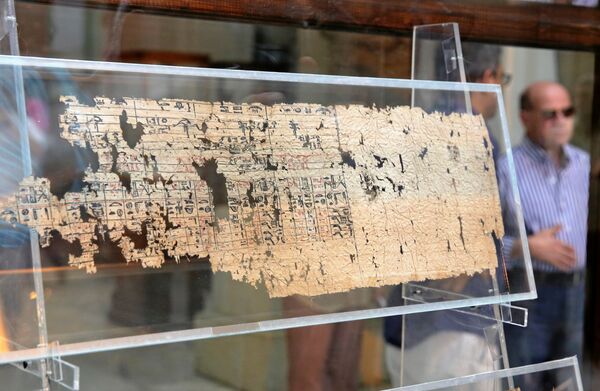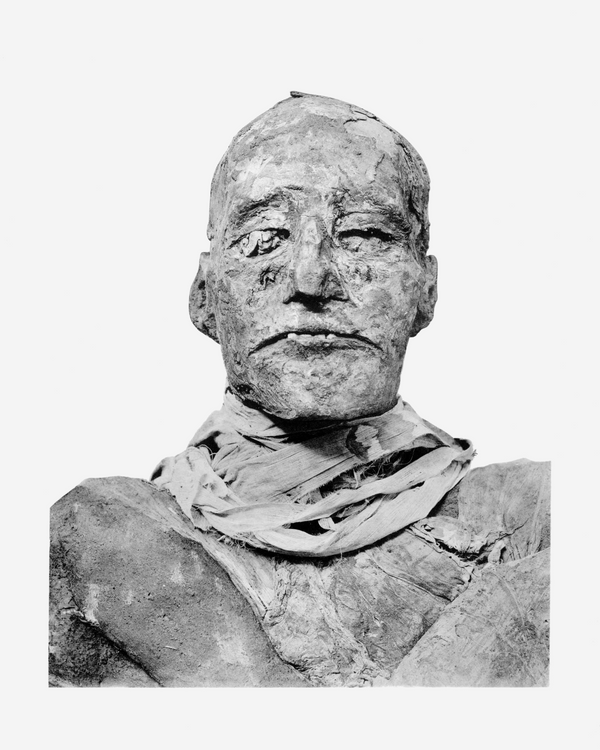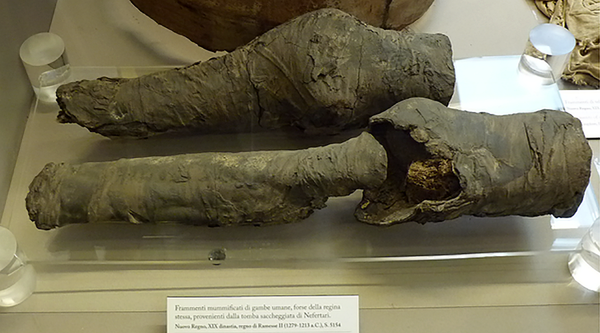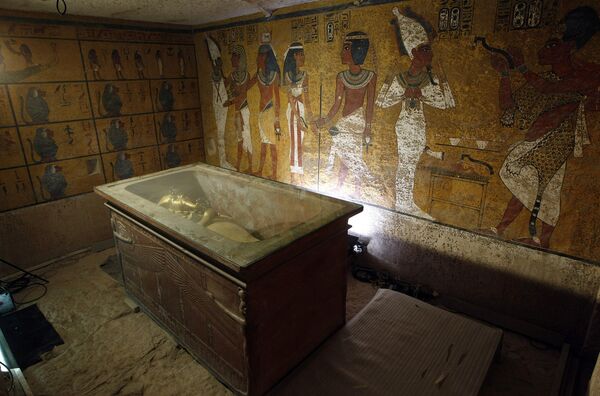Oldest Ever Egyptian Papyri
The earliest ever text on ancient papyri became one the most memorable scientific highlights of this year. The papyri dating back to King Khufu, who ruled ancient Egypt in the 26th century BC, were, in fact, part of the diary of a person called Merer, a government official who led one of the largest team of workers in the construction of the Great Pyramid of Giza.

The diary contains three months of records about the daily life of the builders who worked in the Wadi El-Jarf port and transported huge limestone blocks to Cairo to build the King Khufu's burial structure. Discovered in 2013 at the Red Sea Wadi El-Jarf port, 120 km south of the town of Suez, the papyri were displayed for the first time at the Egyptian Museum in Cairo on July 14, 2016.
#New_Exhibition_at_EMC pic.twitter.com/2iSDgyqIxc
— Egyptian Museum (@EgyptianMuseumC) 14 июля 2016 г.
‘Surprise' Discovery at Antiquities Dealers' Home
Another exceptional find wasn't made at an archaeological site at all, but in an ordinary residential house in Al-Nakhl village near the Egyptian city of Edfu. The owners of the house had been under suspicion of dealing in illegal antiques for a long time, however, this discovery surpassed all expectations the police and archaeologists may have had. A delightful authentic statue of King Amenhotep III was found there modestly standing in the corner of one of the rooms!
The 1.5 meter high statue of the Egyptian pharaoh, who ruled in the 14th century, is skillfully made of black granite. Similar pieces to this masterpiece of Egyptian art can be seen in the Egyptian rooms of the British Museum in London and the Louvre in Paris. The surprising discovery became public on December 31, 2015, in a press release of Egypt's Ministry of Antiquities, setting media abuzz for the following few weeks.
Pharaoh Ramesses III Murder Intricacies and Postmortem Cosmetic Surgery
It is a long-known fact that Ramesses III, a prominent governor in the 12th century BC, was killed in a palace coup. One of his wives, Tiye, and her son Pentawere were apparently behind the conspiracy, according to some texts of papyri. At first the king was cursed through witchcraft but with no result, so his ill-wishers used another method, unknown until now, which caused the pharaoh's death.

Cairo University radiologist Sahar Saleem, who has studied the royal mummies stored in the Egyptian Museum in Cairo, came across the remains of Ramesses III. She discovered that the pharaoh was assassinated by multiple assailants with different weapons. According to the researcher, the pharaoh's toe was hacked off, likely with an ax and in a face-to-face attack, while his throat was cut from the behind with something sharp like an obsidian knife.
Ramesses III was also given a postmortem cosmetic surgery to make his mummy look more attractive for his journey to the afterlife. Filler was put under his skin to "plump out" the corpse, as discovered by Saleem.
Mummified Remains of the beautiful Queen Nefertari
There was another important discovery associated with mummies, which got the attention of the world. On November 30, researchers reported that they finally solved the mystery of mummified legs found back in 1904 in the tomb of Queen Nefertari, a once-splendid burial place that was looted in antiquity.
No one had ever scientifically analyzed them until recently. New research found that they belonged to a middle-aged or older woman who stood around 5 feet 5 inches (165 centimeters) tall and may have had a touch of arthritis. The findings suggest that the legs were indeed Nefertari's, who is one of ancient Egypt's most famous queens, in part because of her beauty.
Secret Doorways Hidden in Tutankhamun's Tomb
Some of the most talked about research in 2016 was the newest study of the Valley of the Kings at the famous tomb of Tutankhamun. Arguably the most well-known British researcher of Egyptian history Dr. Nicholas Reeves of the University of Arizona examined the walls of the King Tut's tomb and proposed that there could be more secrets hiding behind them. Dr. Reeves also thinks that the long lost tomb of the Egyptian Queen Nefertiti may have been found behind those secret "ghost doorways."
Scans carried out in 2015 by Japanese radar technologist Hirokatsu Watanabe supposedly showed evidence of two hidden chambers, along with metal and organic artifacts, proving Dr. Reeves's theory. The findings spurred Egypt's antiquities ministry to issue a statement saying that it was nearly certain that hidden chambers exist in Tutankhamun's tomb.
Alas, this absolute sensation has not received its triumphant development: a new team of researchers supported by the National Geographic Society conducted a second series of scans. The newest radar scans found there were no hidden chambers in Tutankhamun's tomb, Life Science reported on May 11.




